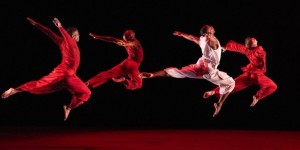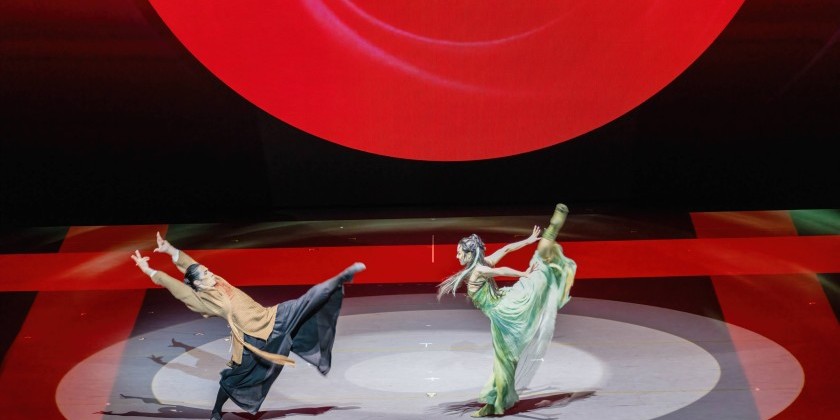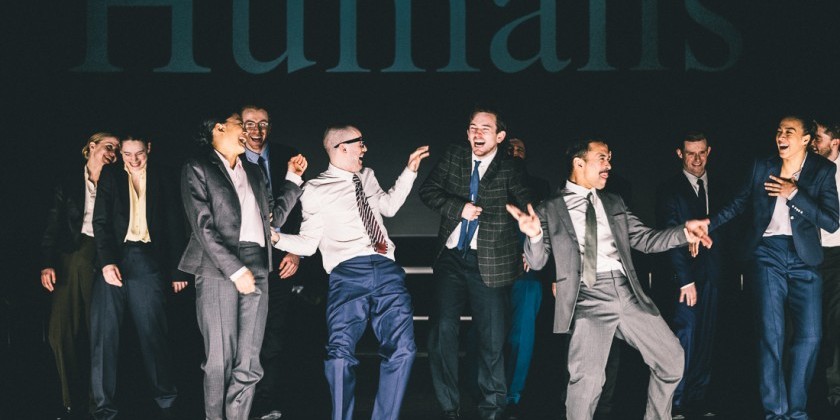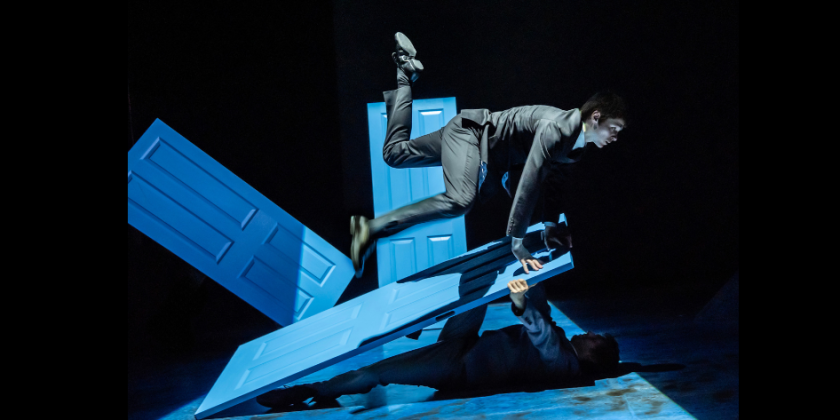THE DANCE ENTHUSIAST ASKS: Joshua Beamish and Daniel Gwirtzman Embrace the Delicate Dance with Technology
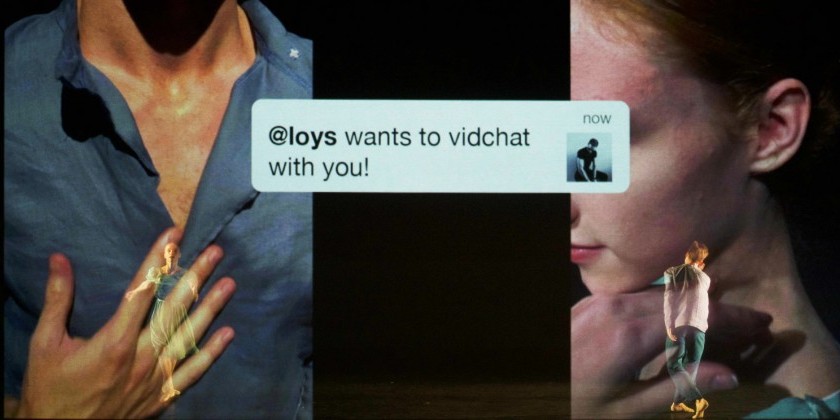
Fundamentally in flux, the dance firmament, a reflection of the world at large, has unsurprisingly seen an uptick in choreography directly involving or inspired by new technology. A decade ago, terms like ChatGPT or the Metaverse might have had a discombobulating effect on our staff and readers. Today, however, we barely bat an eyelash at these words.
This month in particular sees two technology-themed world premieres by British Columbian choreographer Joshua Beamish (founder of MOVETHECOMPANY) and New Yorker Daniel Gwirtzman (creator of his namesake company). Combining breakthrough technology with more 'traditional' forms of art, both dance artists shed light on this curdling of opposites, while also rallying for more innovative in the antiquated world of ballet (Beamish), and underlining why being a dance enthusiast in a technologically-driven era informs each day with more meaning (Gwirtzman).
WHO: Joshua Beamish/MOVETHECOMPANY
WHAT: @giselle", a technology-driven, contemporary reinvention of the beloved romantic ballet classic
WHEN: May 18 - 19, 2023 @ 7:30 PM
WHERE: Gerald W. Lynch Theater, 524 West 59th Street, New York, NY
MORE INFO: Click here
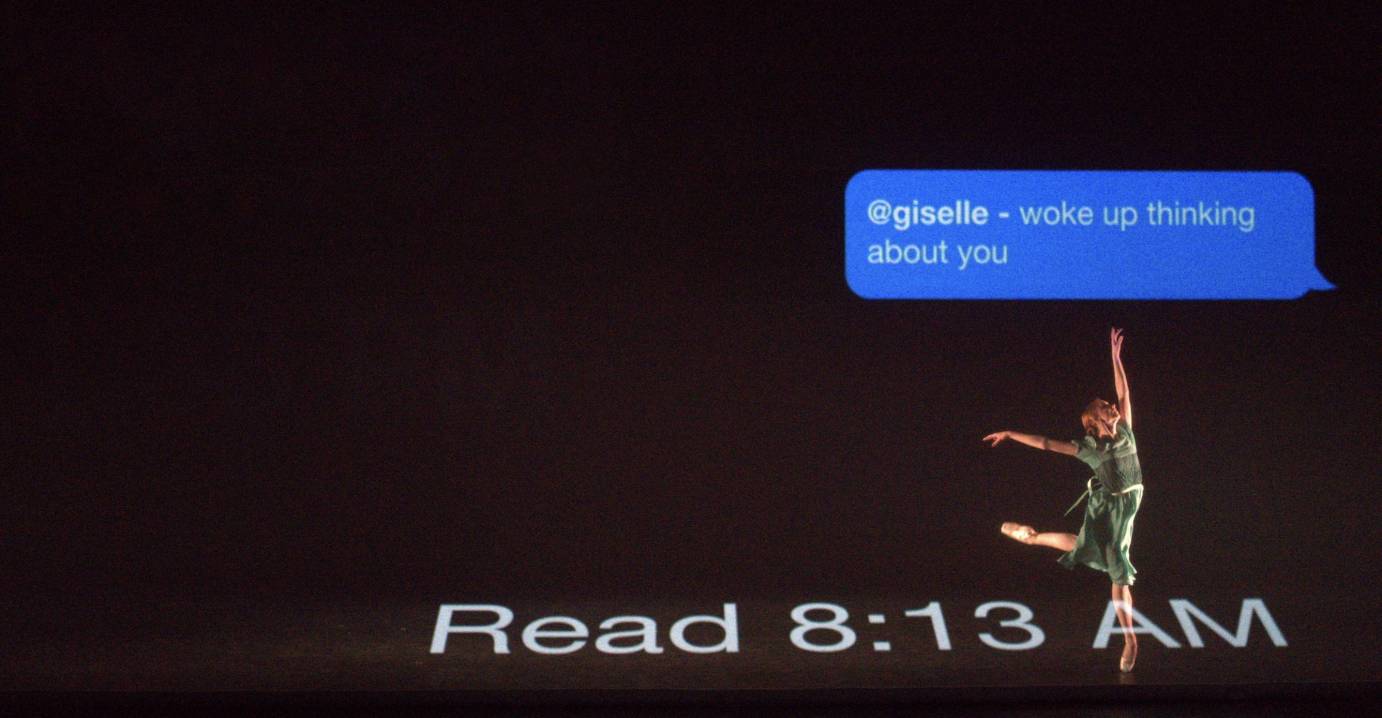
Sammi Sowerby for The Dance Enthusiast: Some might consider the original Giselle (1841) 'untouchable,' yet young dance enthusiasts will almost certainly relate to @giselle better. Was it personal or collective experience that inspired your version?
Joshua Beamish, Choreographer and Founder of MOVETHECOMPANY: In 2016, the director of London's The Royal Ballet, Kevin O'Hare, asked me to pick a ballet from the mainstage season and consider how it might play out in the present day. Giselle's parallels [with the present day] proved the most fascinating to me. I instantly thought about the time I was dating someone for months before learning through Facebook that they had gotten engaged to someone else. That led me to consider the impact of the digital age on our relationships more completely.
I imagined Snapchat 'remote' duets in place of dancing together in person. I thought of the mad scene as a viral livestream. I imagined Albrecht (Count of Silesia, betrothed to Bathilde, Giselle's paramour) living a double life through a fake second profile, Bathilde (Albrecht's fiance) as an influencer, and Berthe (Giselle's mother) worriedly scrolling Google for answers. My experiences shaped the perspective and content, but the updates are equally relatable for our entire team. Reimagining Giselle was the piece I made.
So this shorter work served as a stepping stone for the full-length dance that is @giselle. Tell us about the new and improved 'expansion.'
Joshua Beamish: Reimagining Giselle featured just four dancers: Yasmine Naghdi, Olivia Cowley, Matthew Ball and Paul Kay. It was a series of short scenes from the ballet that meant to modernize the physical language and relationship dynamics of the classical version. From there, I took that vocabulary and evolved it into a full two-act structure over the course of many years, with cast members from ballet companies across North America.
%20-%20Harrison%20James%20and%20ensemble.jpg)
In Giselle, theatrical smoke and fog announces the arrival of the Wilis, the spirits of shunned brides. On the other hand, holograms haunt the protagonist’s male tormentors in @giselle. Tell us about the creation of these projections, presumably in tandem with an expert or experts in the field?
Joshua Beamish: When I first had the idea for this integration of technology, I had no contacts in that world, and no idea of what it would cost. I literally made a public Facebook request for projection designer recommendations, and an acquaintance suggested Brianna Amore. We had a chat over Facetime, and it was immediately clear that she was the right choice, as she understood my vision from the get-go, and was excited to venture into unknown territory. We spent months in film studios, theatres, living rooms and cafés brainstorming, editing and re-editing the projected world of @giselle.
I had a really hard time getting this work presented, because we had no idea what it would require technically. Every time I discussed it with presenters, it sounded like an incredibly expensive show to produce, requiring a very large crew and costly equipment rentals. I could only raise enough money to work in phases. [Between 2018 and 2019] we built a show that could tour with a single computer — no need for special projectors and with the average number of crew for a regular dance performance.
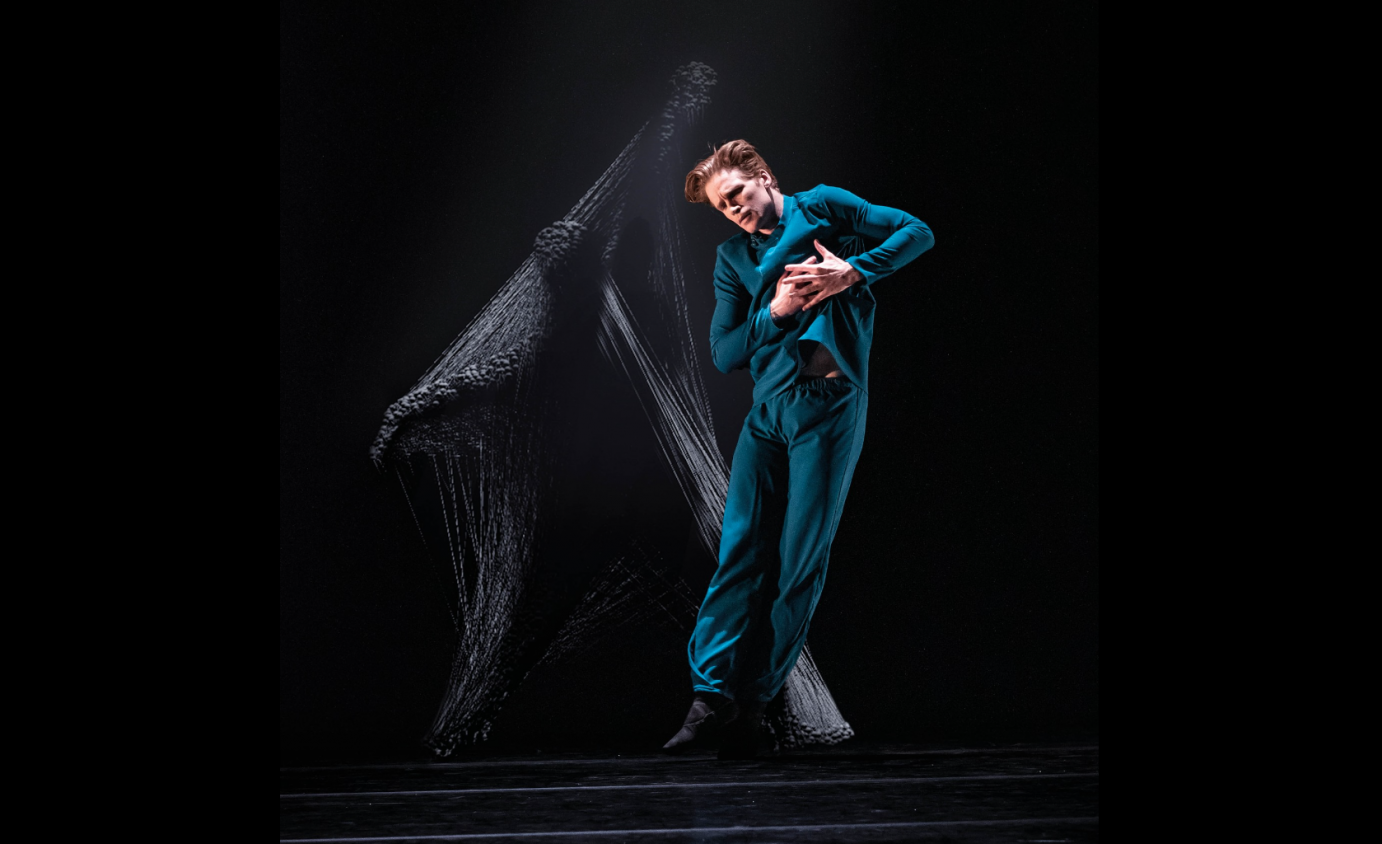
How would you tip off young dance-makers who want to stay rooted in the classics while tapping into technology?
Joshua Beamish: Working with technology is incredibly expensive and time consuming. It's also a creative wonderland. If you can find the resources to innovate within these mediums and they are truly adding something to your work, run with it. If not, avoid it.
I could have never made this work as a commission for a ballet company. I wouldn't have been given the time and resources required to find truly innovative ways of integrating ballet and technology. Unfortunately, I would have had to use my entire commission fee and then some, to figure out a way to do this myself — which is what I did anyway.
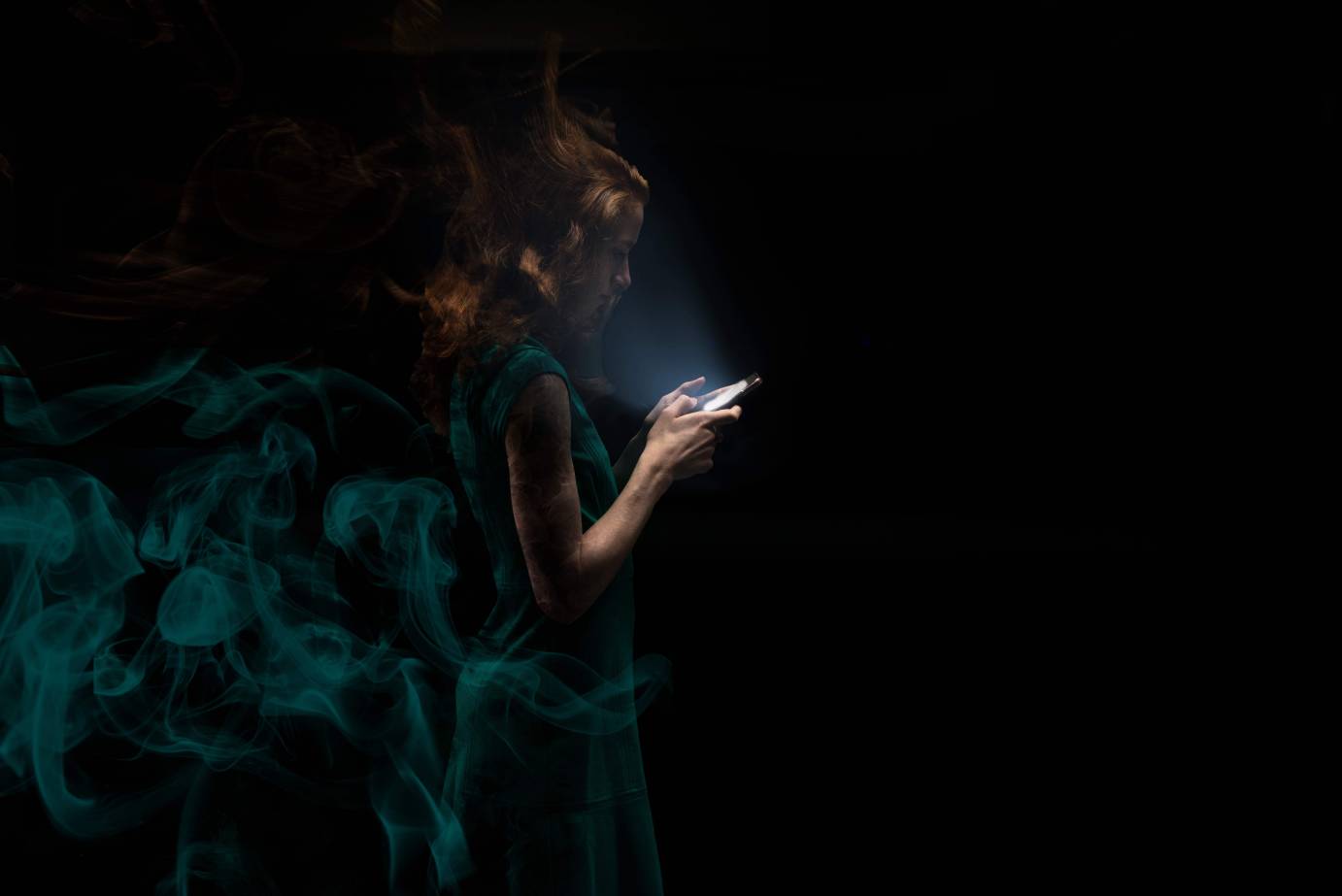
Any last words about being a dance enthusiast in a technologically-driven era?
From my experience, the ballet world is still very stuck in old-fashioned ways of making work, not to mention scheduling creation time. I think major ballet companies should be doing works like @giselle, which innovate the medium, and meet audiences in their present reality. Risk is a requirement for relevancy and an opportunity to offer audiences something relatable and impactful. For these 'risks' to deliver their full potential, companies need to invest, understand and support creators. The idea of a blanket creation timeline and formula just isn't realistic anymore. In fact, it stifles invention. I see this as one of the reasons why so many recent and current commissions are deemed unsuccessful or of poor quality, but companies keep perpetuating the same problematic cycle.
WHO: Daniel Gwirtzman Dance Company in collaboration with award-winning playwright Saviana Stanescu
WHAT: e-Motion, an exploration of artificial intelligence, neuroscience, and what it means to be human in a digital age
WHEN: May 26 - June 4, 2023 @
WHERE: The Cherry Arts, 102 Cherry Street, Ithaca, NY and online
MORE INFO: Click here
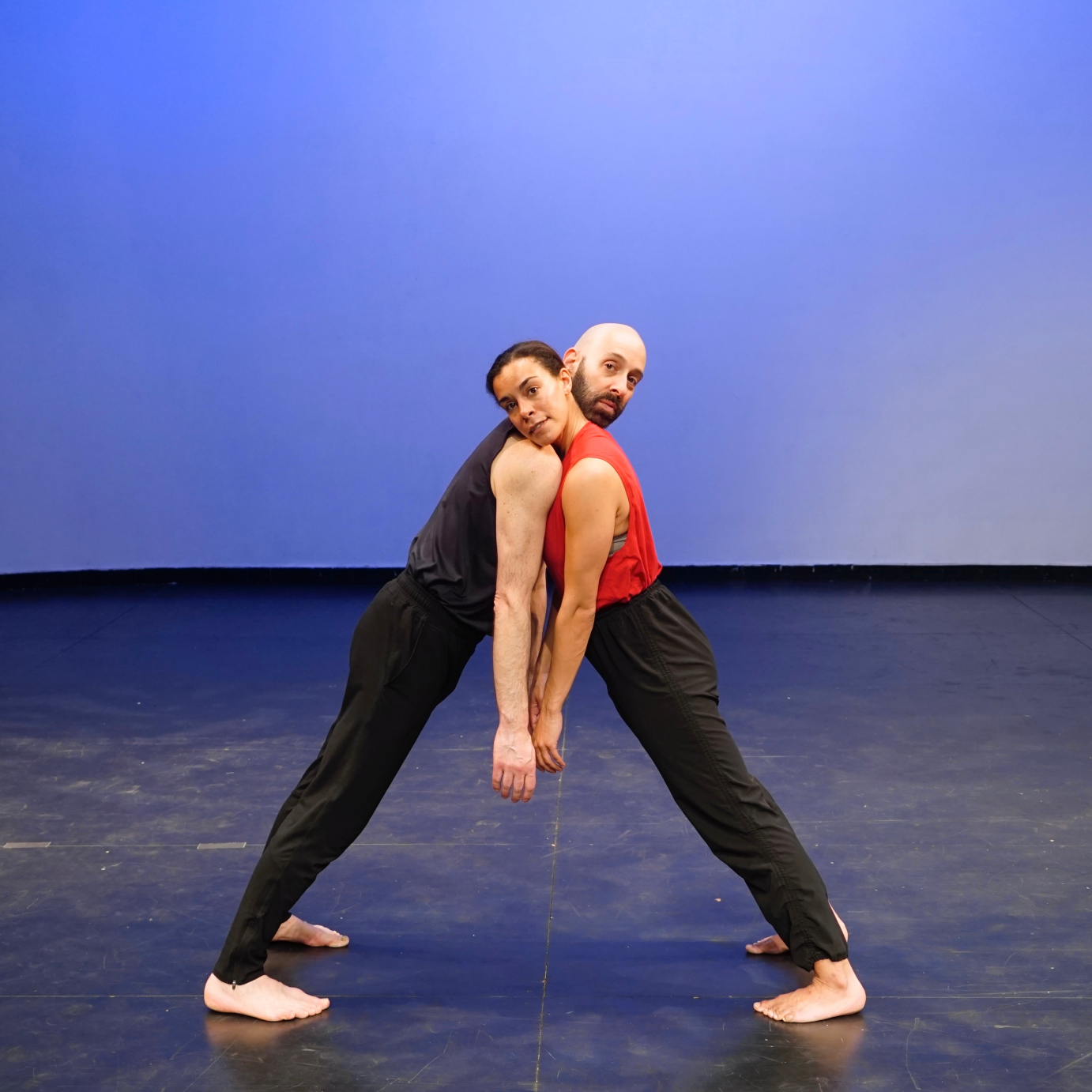
Everyone’s got stuff that keeps them up in the middle of the night, from the quotidian ("Did I lock the garage?") to the existential ("Why am I here?"). Is artificial intelligence one of those things that does it for you?
Daniel Gwirtzman, Choreographer and Founder of Daniel Gwirtzman Dance Company: My hard-working father would fall asleep the moment his head hit the pillow — something I’ve always aspired to emulate. I try hard not to let anything keep me up at night, as the eight hours of sleep I reserve is essential to keeping this instrument working. This said, yes, metaphorically-speaking, AI occupies the bandwidth when my mind is free to roam — it is a fascination that has been present since I founded my company 25 years ago.
I recently went through our archives to find a letter written to the press when Plasma Field (1999), the Company’s first evening-length dance, premiered at the Merce Cunningham Studio. Here is an excerpt:
We may become a sedentary species. There may be no need in the future for us to have legs, for us to locomote. As each generation spends more time in front of a computer, we may evolve to mere stumps, able to function fully with our brains, and our keypads. Is this really so farfetched? Legs may become vestiges. If we stop needing them and using them, will we evolve to not have them? What hubris would allow us to think otherwise? That after millions of years, we would stop evolving? Why would we? We will not. Our technology will shape our evolution, as our environment has always done, to every species.
We are creating the reality we have envisioned; our dreams of the future inform our present, propelling us closer to the 'Blade Runner' fantasies we have harbored for decades. It can only be this way. We make the reality we desire. What will be the ultimate effects of our hyper-technological quests? And what has been lost along the way?
These musings strike me as relevant today as they did when I wrote them in 1999. On the cusp of this tipping point, when there is so much uncertainty about the harm of this exponential acceleration of AI, along with the benefits…we don't know. Really all we do do know is that we don’t know. e-Motion is presenting these ethical questions as commerce drives the race forward. This dance is completely of our time, of this moment in time when all that we have known could be at stake.
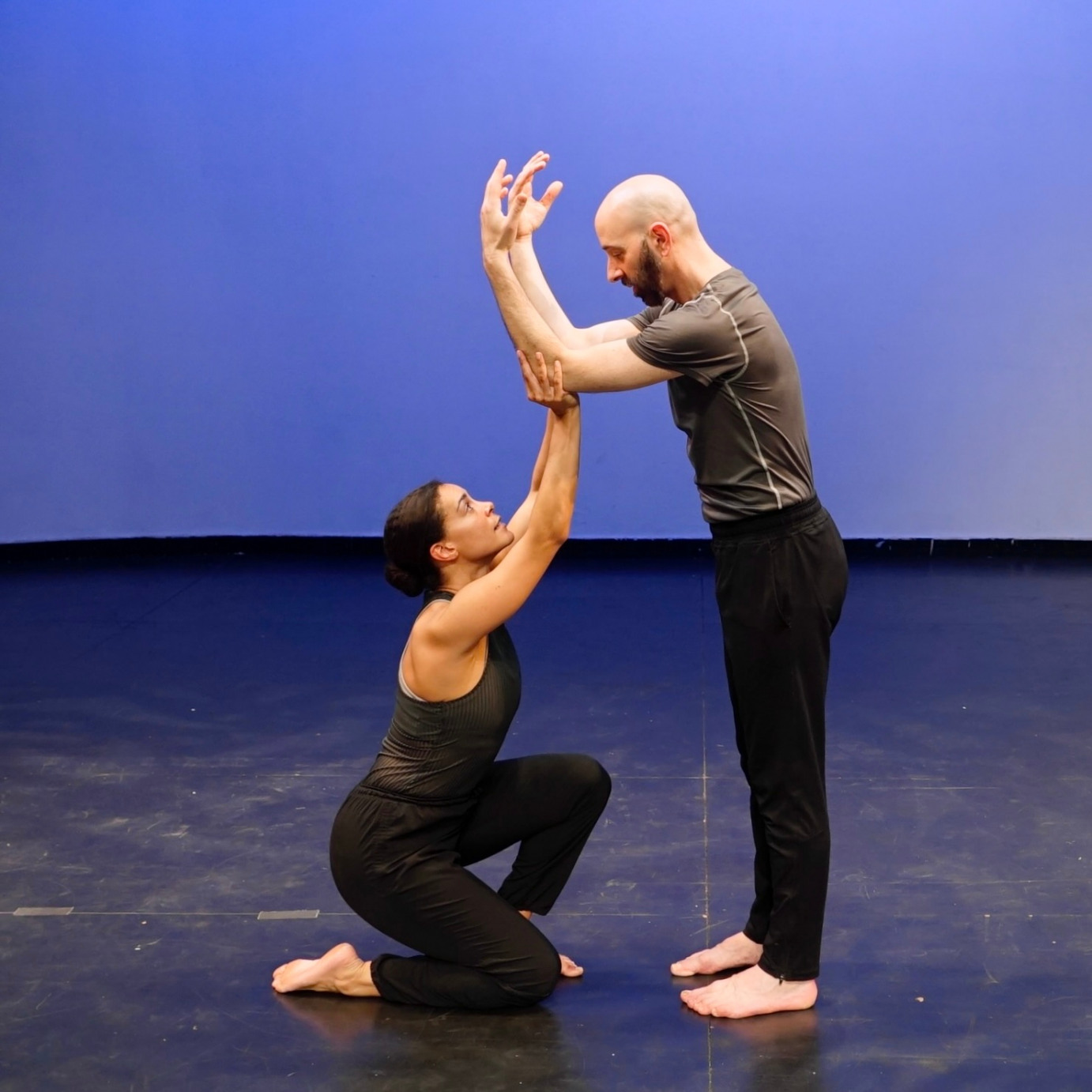
Did research involve studying other tech-inspired dances by your fellow dancemakers? Jody Oberfelder’s The Brain Piece, Charles Atlas' The Mathematics of Consciousness, or Vangeline Theater's The Slowest Wave...
Daniel Gwirztman: I would add Bill T. Jones' Curriculum II to this list!
However, the research for us was less dance and more on the history and development of AI, what it can do, and what it is doing now. The humanity side of this larger story — what it is to live with AI, which is about to invade and pervade every aspect of our lives — is the tale we have developed. e-Motion is apt and intriguing because it uses the dancer as a metaphor for an AI being, and dance as a whole as a metaphor for AI. We are avoiding a didactic lecture or essay, but are using the framework of neuroscience to create flesh, blood and circuitry.
Kindly shed light on your artistic and personal relationship with the estimable Saviana Stanescu.
Daniel Gwirtzman: I met Saviana four years ago when beginning to teach at Ithaca College, where she is a tenured professor of Theatre Studies. The personal friendship took root, leading to lengthy walks and talks around Ithaca, through its gorges, even swims in Cayuga Lake. We knew we were interested in collaborating on a project and had been discussing several ideas, until the spark ignited the birth of e-Motion.
One thing that is important to us is this hybridization of dance and theater. e-Motion is not a typical dance and it’s not a play. The work has a clear narrative with clear characters. The script is presented as text we hear. This is not an abstract work, and yet, the same movement could be seen as abstract in a different setting, with a different treatment. It is presicely because verbal language is attached to the movement language that the viewer may understand abstraction in dance, how movements can represent concrete meanings, how there is a structure and lexicon to dance. The vocabulary repeats, certain gestures can signify certain words, or themes, or emotions. So this blending of theater and dance helps make the work accessible to non-dance going audiences, which is centrally important to the mission of the dance company.
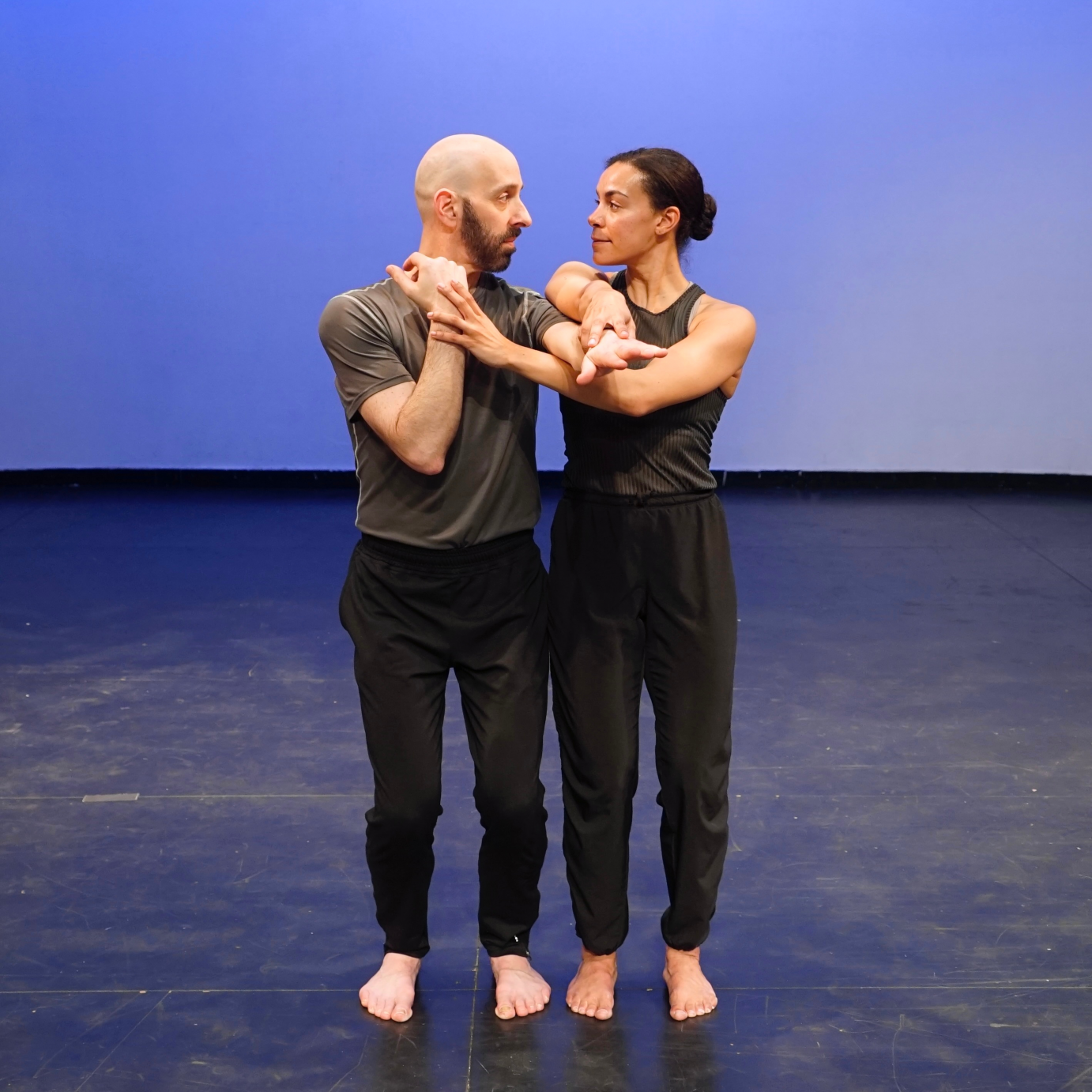
ChatGPT is described as "a third player in the initial stages of inception" of e-Motion. Tell us about 'collaborating' with the world’s most-used chatbot.
Daniel Gwirtzman: [For the benefit of those unfamiliar with ChatGPT, the AI tool reacts to typed prompts and language, and is an inexhausible source of highly-tailored copy.] I fell down the rabbit hole of ChatGPT and tried hard to get it to go “off script,” to try to trip it up, get it to reveal something other than what was expected, and to exploit any loopholes.
I observed how it learns from its previous responses, much the way a child or student does. I tried to enter the mindspace of ChatGPT, predicting its processes and patterns, its lexicon, its references, its repetitions. The randomness of ChatGPT became a structure for me to work with choreographically. That within a tightly-prescribed structure there is evidence of disruption, freedom, being off the grid in some way, the unexpected, chaos. This has translated compostionally into highly-rigorous phrases and scenarios that allow for departure. The lanes in the pool become removed, allowing the performers the space for unregulated open swim.
Saviana herself said, "I asked ChatGPT many questions connected to the story Daniel and I had conceived for e-Motion, and had the AI generate hundreds of pages that gave us insights into how this language model "thinks" and creates text. For a while I was paralyzed and couldn't write anything myself: if ChatGPT was able to generate so much text, what was my role as a playwright now? But after observing the dance sequences, watching Daniel and Sarah beautifully embody the story ideas, and seeing the amazing human bodies in motion, my human creativity kicked in again. After all, ChatGPT was repeating itself, offering dull phrases. I could bring my own unique brand of humor and irony to the story; I could write playful dialogues and insightful monologues that would reflect my own poetic and dramatic writing style, and connect to the abstract movement Daniel imagined.
Here's something to look forward to: there’s an interactive part where the spectators can have a direct 'discussion' with ChatGPT. One could say that ChatGPT might be an actor in our show or a researcher who supports us, but I wouldn't call it a playwright, and definitely not a dancer!"
Any last words about being a dance enthusiast in a technologically-driven era?
Daniel Gwirtzman: It is precisely being a dance enthusiast in a technologically-driven era that informs each day with meaning, satisfaction, joy, and gratitude, an analog antidote to the digital reality of screens, keyboards, cables, and data. Tuning out the world by tuning into one’s body is an escape into the natural world, connecting bodily and cellularly to the evolution of our species over eons.




